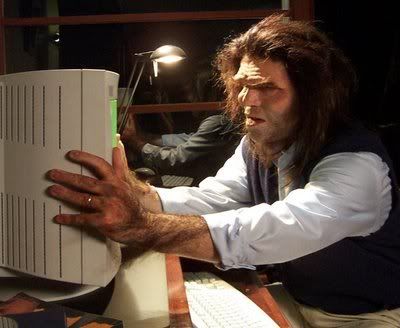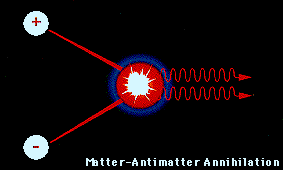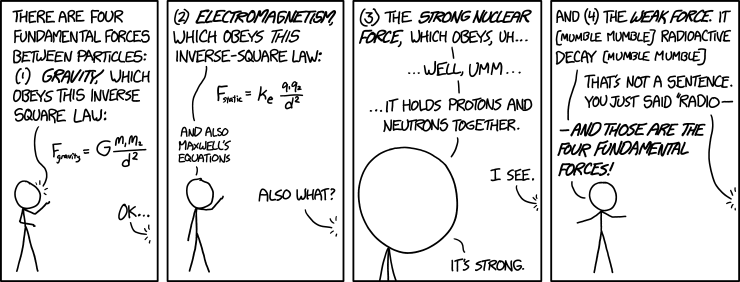If it hasn’t become painfully apparent at this point, I absolutely love physics. I love all things science, most of all the stuff that I couldn’t imagine myself. Every little thing that happens, every thing we do, involves so much and yet we find it to be so simple to type something like this or call someone we love on our cellphone. It really just goes to show that practically anything is possible. I like to reference Murphy’s Law often in that anything that can happen, will happen and so all of the amazing possibilities that I’ve discussed and many more are a reality, if not now, then later. So, I felt for this last post, it would be appropriate that I outline what I’ve talked about thus far, give a bit of a summary, and the possibilities of what all this random physics could be.
- Welcome to the world of particle physics!
- There are 25 known particles
- The most important of which are the Gauge Bosons, which are the force carriers
- Completely understanding and harnessing these fundamental particles would mean that we could do anything from controlling gravity to manipulating some of even the most basic laws of physics.
- Antimatter
- Antimatter is like matter’s evil doppelganger
- Bananas produced antimatter
- The antimatter within bananas will not kill you
- Though I’m sure there would be plenty of other uses, if we had a convenient abundance of antimatter it would be a great way to get rid of radioactive waste or just waste in general
- Accelerators
- Particles have an approximate size – their Compton wavelength
- In order to understand particle physics, we smash atoms together at speeds near that of light
- There are very few accelerators in the world
- Finding the Up quark would mean that we have a complete list of all the particles and that they all really exist leaving room for more experimentation.
- Gravitational Waves!? and Relativity!
- Einstein’s special theory of relativity deals with objects in the same inertial frame reference
- Einstein’s general theory of relativity deals with objects with constant acceleration which explains how time passes differently in different situations of acceleration
- Gravity as we feel it, is the warping of the space-time fabric around extremely massive objects like the sun or the planets
- Stars work by countering gravity due to their large mass with the force of the nuclear fusion reactions occurring inside
- Gravitational waves were detected when two super-massive black holes collided and combined which sent ripples through the space-time fabric. These ripples were picked up using a system of mirrors and lasers. The path of the laser was changed ever so slightly, but was still detected
- This may be the end of discovery in physics, but hopefully not
- Further understanding gravitational waves and harnessing their energy or how they work could mean a lot for the advancement of science today
- Practical Practices of Particle Physics
- Particle physics research has contributed to everything from machines meant for medical diagnosis, to treating medical ailments with lasers, and monitoring waste from nuclear reactor cores
- So this post doesn’t really contribute anything to the wonder as it’s more of the reality, but I definitely believe that’s a large part of the wonder anyway because it shows what is already possible.
- The Teeny-Tiny Stuff of Science Fiction: Teleportation Edition
- Quantum entanglement might just be the key to teleportation
- It’s that or destroying and reconstructing the individual’s body every time
- If we could figure out how to safely do this with multiple particles at once, then voila! We would have our way to teleportation.
- The Teeny-Tiny Stuff of Science Fiction: Time Travel Edition
- There’s a number of space-related options including black holes, worm holes, infinite cylinders, and cosmic strings which all rely on the same idea that a closed time-like loop would allow for time to pass more quickly inside while time went by slowly outside.
- A time machine could work on the basis of exotic matter
- Pretty much all of the ways we know of are hypothetical, and at the same time also equally as impossible and deadly if they were realized.
- However! If we were to figure out a way to protect the individual from harm as this goes on, then we could time travel!
- Theories of Everything: String Theory
- One of the biggest problems in physics currently is that we do not have a way to explain gravity using quantum mechanics
- String theory is a solution for that
- String theory basically states that all of the fundamental particles are actually extremely tiny vibrating strings. Different oscillations mean different particles.
- Having a theory that unifies all that we know regarding physics means that we can finally expand and exploit physics beyond our current understanding. Understanding all of it, means being able to use it however we please or at least coming up with the means to.
The possibilities are endless and I simply cannot wait to see how things change over the rest of my life. I hope that with my posts I’ve helped to inform and entertain, but also maybe instill a slight love for physics that was not there previously. Thank you for reading and I will always be open to new questions or comments so feel free to ask me anything, anytime!


 Piecing together the almost relatively infinite number of particles that make us up is ridiculously hard because of this. CalTech scientists were able to teleport a photon by using three photons where two photons were entangled, one photon of the two entangled was given information about the one not entangled photon which transferred it to that photon. I can’t even begin to explain the exact mechanics behind it, but that’s what happened pretty simply. To sum it up, there is hope, but it will be along time before we see anything practical. Also, while you’re already thinking about all of this wildly conceptual stuff, it may be a good time to consider what our existences are. One theory for how we might arrive at teleportation was that rather than using quantum methods, we would reassemble our atoms in one place after scanning and destroying our originals. Since we would effectively be killing ourselves and then remaking ourselves and continuing to live, it begs the question about whether our life actually ended at that moment. My personal favorite blog/website on the internet is called WaitButWhy.com and they cover this exactly:
Piecing together the almost relatively infinite number of particles that make us up is ridiculously hard because of this. CalTech scientists were able to teleport a photon by using three photons where two photons were entangled, one photon of the two entangled was given information about the one not entangled photon which transferred it to that photon. I can’t even begin to explain the exact mechanics behind it, but that’s what happened pretty simply. To sum it up, there is hope, but it will be along time before we see anything practical. Also, while you’re already thinking about all of this wildly conceptual stuff, it may be a good time to consider what our existences are. One theory for how we might arrive at teleportation was that rather than using quantum methods, we would reassemble our atoms in one place after scanning and destroying our originals. Since we would effectively be killing ourselves and then remaking ourselves and continuing to live, it begs the question about whether our life actually ended at that moment. My personal favorite blog/website on the internet is called WaitButWhy.com and they cover this exactly: 







 So, in case you are wondering more about
So, in case you are wondering more about